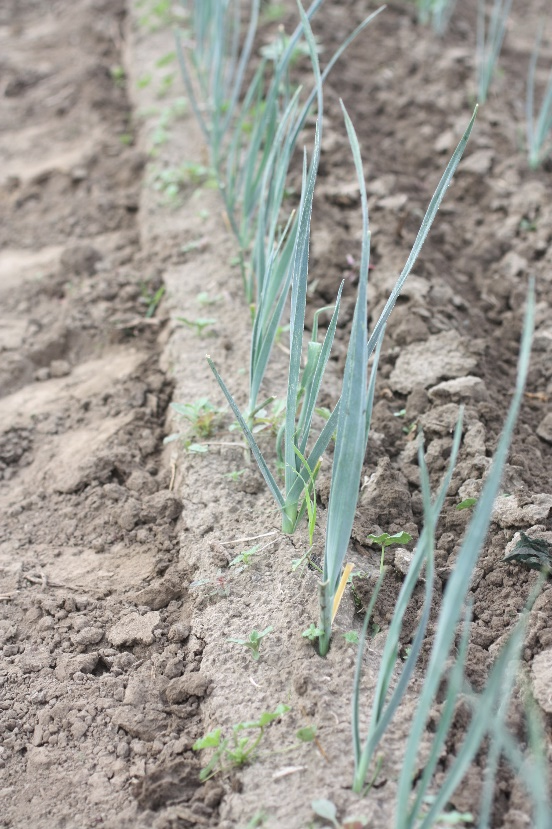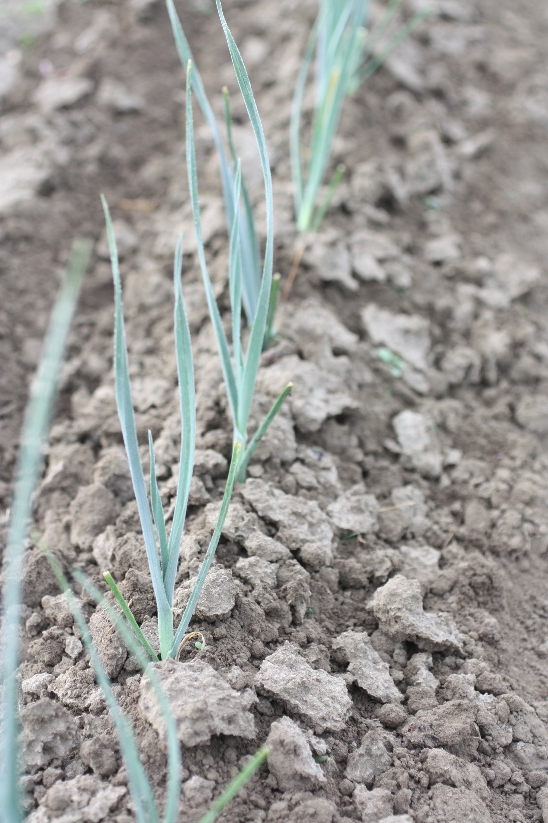Two bills were signed into law that will affect vegetable growers in California. The minimum wage law will result in a $15/hour minimum wage will be phased in and take full effect in 2022. In addition, Assembly Bill 1066 removes the overtime exemption for agricultural employers resulting in employees being paid overtime after working 8 hours a day or 40 hours a week (also phased in by 2022). Given that agriculture is a seasonal activity in which 10-hour days and 60-hour weeks are the norm during the growing season, growers are struggling with how to adapt to these changes. These laws have the potential to put California growers at a disadvantage by increasing the costs of production here, thereby making production in other areas more advantageous. Growers producing crops that are more labor intensive such as leafy vegetables are particularly concerned about how to adjust to these new labor costs.
Growers have expressed the need for technologies to make hand weeding more efficient to achieve acceptable weed control in production fields. Improvements in cultural and chemical control of weeds and the introduction of new technologies may play an important role in helping growers in this regard.
One of the issues for many vegetable crops is the lack of new herbicides that can provide good weed control with minimal environmental issues and that don't create plant back or preharvest issues that make working with them difficult. In addition, increased regulatory pressure can affect the registration status of older herbicides which can put them at risk for being removed from the market.
As a result, many of our research efforts with herbicides have been to examine new uses of older materials to solve specific problems. Examples of new registrations for older materials include expansion of the prometryn labels to include crops such as carrots and cilantro, linuron on cilantro and parsley, S-metolachlor on spinach, and pendimethalin on peppers and onions.
Herbicides can be particularly effective in reducing the need for hand labor in vegetable crop production. In particular, crops grown on high density 80-inch wide beds that cannot be cultivated can be exceedingly expensive to weed. We measured a reduction in had weeding in cilantro grown on 80-inch beds from 238 hours per acre to weed the untreated control down to 6.5 to 8.8 hours per acre with the use of prometryn and linuron (http://cemonterey.ucanr.edu/files/155103.pdf).
New technologies such as finger and torsion weeders, as well as automated weeders are now gaining acceptance in California. Until recently, these technologies were commonly used in Europe where issues with high labor costs are nothing new. Much of the development of this technology has come from that part of the world and there are now companies importing it into the US markets.
Finger weeders were originally developed in Michigan by the Buddingh Company. The concept was adapted and changed by Kress and Steketee companies in Germany and the Netherlands, respectively. Fingers run in the seedline and uproot small weed seedlings (see Photos 1-3). We studied these implements in 2007-08 and found that they were able to reduce hand weeding in crops such as lettuce, celery, broccoli and leeks by as much as 45% over standard cultivation which does not remove weeds from the seedline. Given increased costs of hand weeding, US growers are now showing interest in the use of finger weeders technology and US distributors are seeing increased sales. Finger weeders are not a total replacement for hand weeding but make subsequent hand weeding operations much more efficient and economical. For more information and to see finger weeders in action go to: https://www.youtube.com/watch?v=I4kzebMG6rE&t=212s
The Robovator and Steketee IC are automated weeders that use machine vision, computer processing of images and a split knife to remove weeds. They have been commercially available in the Salinas Valley for the last two years. In 2015 we evaluated their efficiency at removing weeds in lettuce following thinning. An average of four trials showed that they reduced subsequent hand weeding by 37% (http://cemonterey.ucanr.edu/files/250563.pdf ). These studies were mostly conducted on direct seeded lettuce which is not the optimal scenario for their use because they were designed for use on transplanted crops and may provide better weed control with that planting scenario.
Increases in labor costs will affect the costs of production of vegetable crops in California. Growers will have to adapt to these new conditions in order to stay competitive with producers in other areas. Taking advantage of production practices that help reduce weed pressure will be an important avenue for reducing costs. In addition, continuing to find new uses of older herbicides will be necessary to extract the maximum benefit from them. New technologies in are becoming more cost effective and growers will increasing turn to mechanization as a viable strategy to effectively reduce weed pressure and stay economically competitive.



Attached Files: